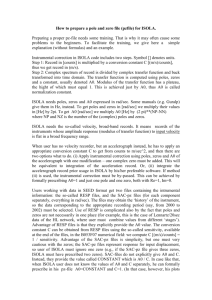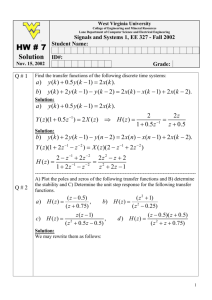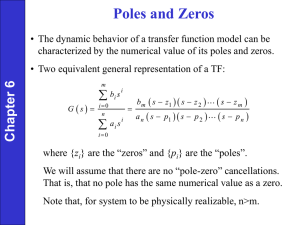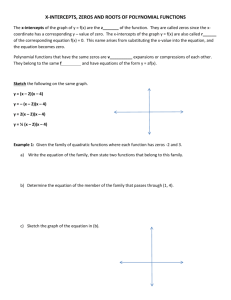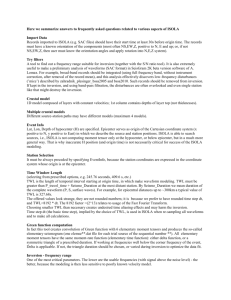How to prepare a pole and zero file for ISOLA
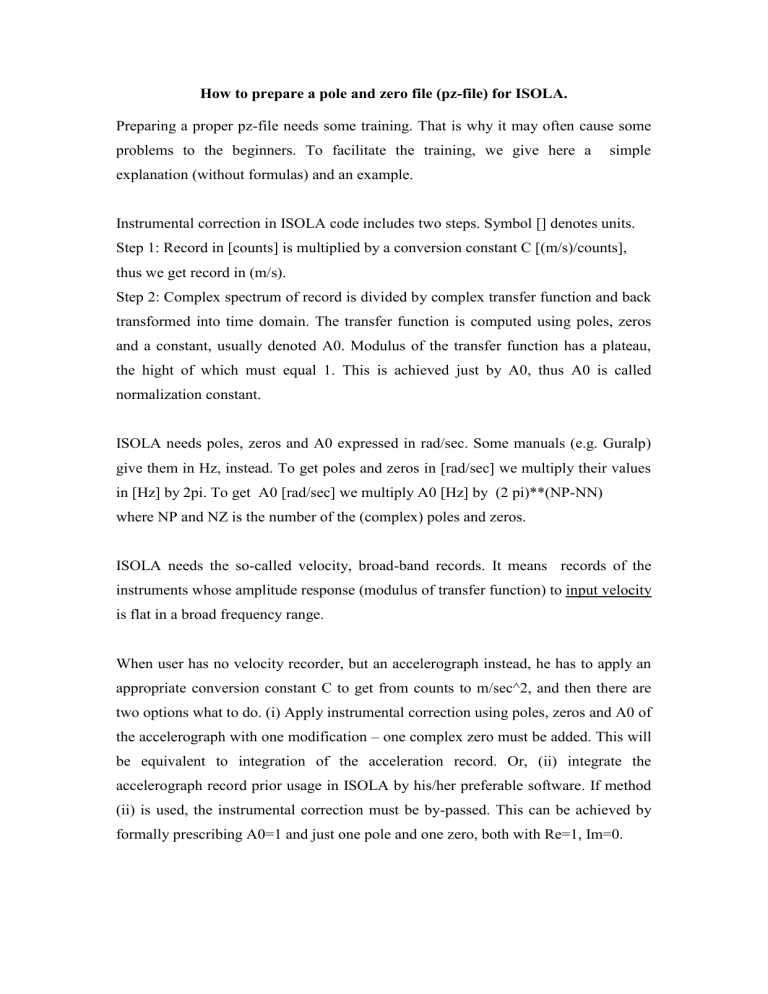
How to prepare a pole and zero file (pz-file) for ISOLA.
Preparing a proper pz-file needs some training. That is why it may often cause some problems to the beginners. To facilitate the training, we give here a simple explanation (without formulas) and an example.
Instrumental correction in ISOLA code includes two steps. Symbol [] denotes units.
Step 1: Record in [counts] is multiplied by a conversion constant C [(m/s)/counts], thus we get record in (m/s).
Step 2: Complex spectrum of record is divided by complex transfer function and back transformed into time domain. The transfer function is computed using poles, zeros and a constant, usually denoted A0. Modulus of the transfer function has a plateau, the hight of which must equal 1. This is achieved just by A0, thus A0 is called normalization constant.
ISOLA needs poles, zeros and A0 expressed in rad/sec. Some manuals (e.g. Guralp) give them in Hz, instead. To get poles and zeros in [rad/sec] we multiply their values in [Hz] by 2pi. To get A0 [rad/sec] we multiply A0 [Hz] by (2 pi)**(NP-NN) where NP and NZ is the number of the (complex) poles and zeros.
ISOLA needs the so-called velocity, broad-band records. It means records of the instruments whose amplitude response (modulus of transfer function) to input velocity is flat in a broad frequency range.
When user has no velocity recorder, but an accelerograph instead, he has to apply an appropriate conversion constant C to get from counts to m/sec^2, and then there are two options what to do. (i) Apply instrumental correction using poles, zeros and A0 of the accelerograph with one modification – one complex zero must be added. This will be equivalent to integration of the acceleration record. Or, (ii) integrate the accelerograph record prior usage in ISOLA by his/her preferable software. If method
(ii) is used, the instrumental correction must be by-passed. This can be achieved by formally prescribing A0=1 and just one pole and one zero, both with Re=1, Im=0.
Users working with data in SEED format get two files containing the intrumental information: the so-called RESP files, and the SAC-pz files (for each component separately, everything in rad/sec). The files may obtain the ‘history’ of the instrument, so the data corresponding to the appropriate recording period (say, from 2000 to
2002) must be selected. Use of RESP is complicated also by the fact that poles and zeros are not necessarily in one place (for example, this is the case of Lennartz/20sec data of the HL network, where user must combine values from different ‘stages’).
Advantage of RESP files is that they explicitly provide the A0 value. The conversion constant C can be obtained from RESP files using the so-called sensitivity, available at the end of the files, in the B053F07 numerical field: we compute C [(m/s)/counts] =
1 / sensitivity. Advantage of the SAC-pz files is simplicity, but one must very cautious with the zeros; the SAC-pz files represent response for input displacement, so user of ISOLA must ignore one zero (e.g., if the SAC-pz file gives three zeros,
ISOLA must have prescribed two zeros). SAC-files do not explicitly give A0 and C.
Instead, they provide the value called CONSTANT which is A0 / C. In case like that, when ISOLA user does not know the values of A0 and C separately, he can formally prescribe in his pz-file A0=CONSTANT and C=1. (In that case, however, his plots of the modulus of the transfer function will formally have their plateau equal
CONSTANT, not 1.)
Users working for example with Guralp manuals will proceed in a slightly different manner. First of all (as already mentioned above), they will have to pass poles, zeros and A0 expressed in Hz to the ISOLA units of rad/sec. As for C, the user will have to know two constants. One of them is sensitivity of the seismometer (e.g. 2*3000
V/(m/s)). Note a different usage of the same word here, compared to the RESP seed files ! One has also to be cautious wheter factor 2 is to be used, or ignored (i.e. to take
6000 or 3000). This depends on the type of the connection between the seismometer and the digitizer. For example, the Guralp instruments with digitizers mounted on the top of the sensor do not use the factor 2, while the installations with a separate standalone digitizers do apply te factor 2. This issue needs a consultation with a technician or the provider. The other important constant is related to the digitizer, i.e. the constant to convert Volts to counts. If, for example, we know that 1 count=10**(-6)
Volt, and, from above, we have 1 m/sec=3000 Volt, we get 1 count = 300 * 10**(-
12) m/sec. In other words, for the 4 th
row of the ISOLA pz-file we got then C= 300 *
10**(-12) [(m/sec)/count]
Example
We present the above using the example of a Trillium seismometer and a Trident
(Nanometrics) digitizer. From the manuals we know the following: The Trident digitizer is set at 1 count per microvolt . The Trillium manual gives:
Thus we have the following: A0 = 133310. Using the Trillium sensitivity (1500
V/m/sec) and digitizer’s sensitivity (1cont/microV) we get the value 6.66667e-10 as m/sec per 1 count. Finally we put the above values in a text file with the following format.
A0
133310 count-->m/sec
6.6667e-10 zeroes
3
0.0 0.0
0.0 0.0
51.5 0.0 poles
5
-272 218
-272 -218
56.5 0
-0.1111 0.1111
-0.1111 -0.1111
Example of Pole and Zero file for ISOLA (Trillium40 seismometer and Trident digitizer).
Before proceeding with instrument correction we can use option Plot Response (from
Raw data Preparation GUI). At this plot we should always check if the flat part of the amplitude response (the so-called ‘plateau’) is equal to 1. That means that our A0 value is correct.
Frequency Response for Trillium-40 seismometer (amplitude-top, phase-bottom).
